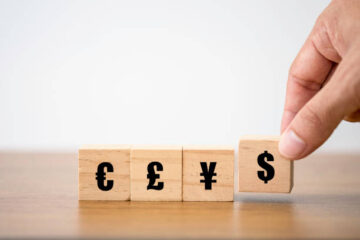Many are reducing the amount of wine they drink after seeing higher prices both in stores and restaurants.
While a day will not pass without someone bringing up the sky-high price of gas, inflation is coming for other areas as well — most notably, for the wine served when eating out and, eventually, even the wine aisle.
Over the last year, inflation has sent the cost of many grocery items skyrocketing. The Department of Agriculture found that grocery prices in the United States rose by nearly 10% between 2021 and 2022 while certain products saw even more dramatic spikes. Eggs are now 22% more expensive while a pound of bacon commands 17.7% more than it did last year.
While the wine one buys at the store has only seen single-digit inflation (a Wells Fargo report found that it increased by only 5.6% from 2021), restaurants in particular have been hiking up the prices of both wines by the glass and bottles.
Price Increases of ‘Up To 20%’
“While the price of wine had been relatively stable compared to surging cost of fuel and groceries, we are now seeing wine in the crosshairs of massive inflationary pressures,” Mark Oldman, founder of the Bevinars wine tasting club. “Restaurants have been much more aggressive in their price hikes, with increases of up to 20% at some high-end restaurants.”
In its survey of over 500 wine drinkers, Bevinars found that almost half had reduced the amount of wine they consume after seeing higher prices both in stores and restaurants.
Still more were opting for less expensive wine than they had previously been used to ordering — sometimes that means a local rather than imported bottle and, in other cases, the boxed wine that some aficionados have longed ridiculed as ‘cheap.’
“I hate that our favorite $15 wine is now $20,” one survey respondent told Oldman. Other money-saving tricks reported in the survey include seeking out budget labels and doing BYOB more often.
If current trends continue, wine is only going to get more expensive going forward.
Inflation Is No Joke
But while discovering that a favorite bottle of wine now costs more is an unpleasant surprise, inflation is having an even stronger impact on other areas.
A recent study from Omaha-based insurance services company Breeze found that 88% of consumers have cut spending in some form due to inflation.
About 73% of U.S. households have cut back on restaurants and takeout, 63% on consumer spending, 62% on social spending, 57% on groceries, 44% on gas, and 35% on debt payments.
One area where inflation is felt the strongest is items that are often considered the “cheapest” option. Fast-fashion clothing companies like H&M (HNNMY) and Zara have named the rising cost of materials as the reason for its multiple price hikes.
Grocery costs at dollar stores spiked by 14.3% from 2021 and 22.5% from 2020. By contrast, online grocery store prices rose by only 12.4% from 2020.
At the same time, traffic at dollar stores and discount chains has been through the roof — compared to 2019, foot traffic rose by 20.4% at Family Dollar and 34.1% at Five Below (FIVE) – Get Five Below Inc. Report.
This indicates an alarming pattern of things getting more expensive for those who, due to low income, already rely on the least expensive option to get by — as inflation creeps in and makes traditionally cheap thing not so cheap, the crunch felt by millions across the country becomes even tighter.


